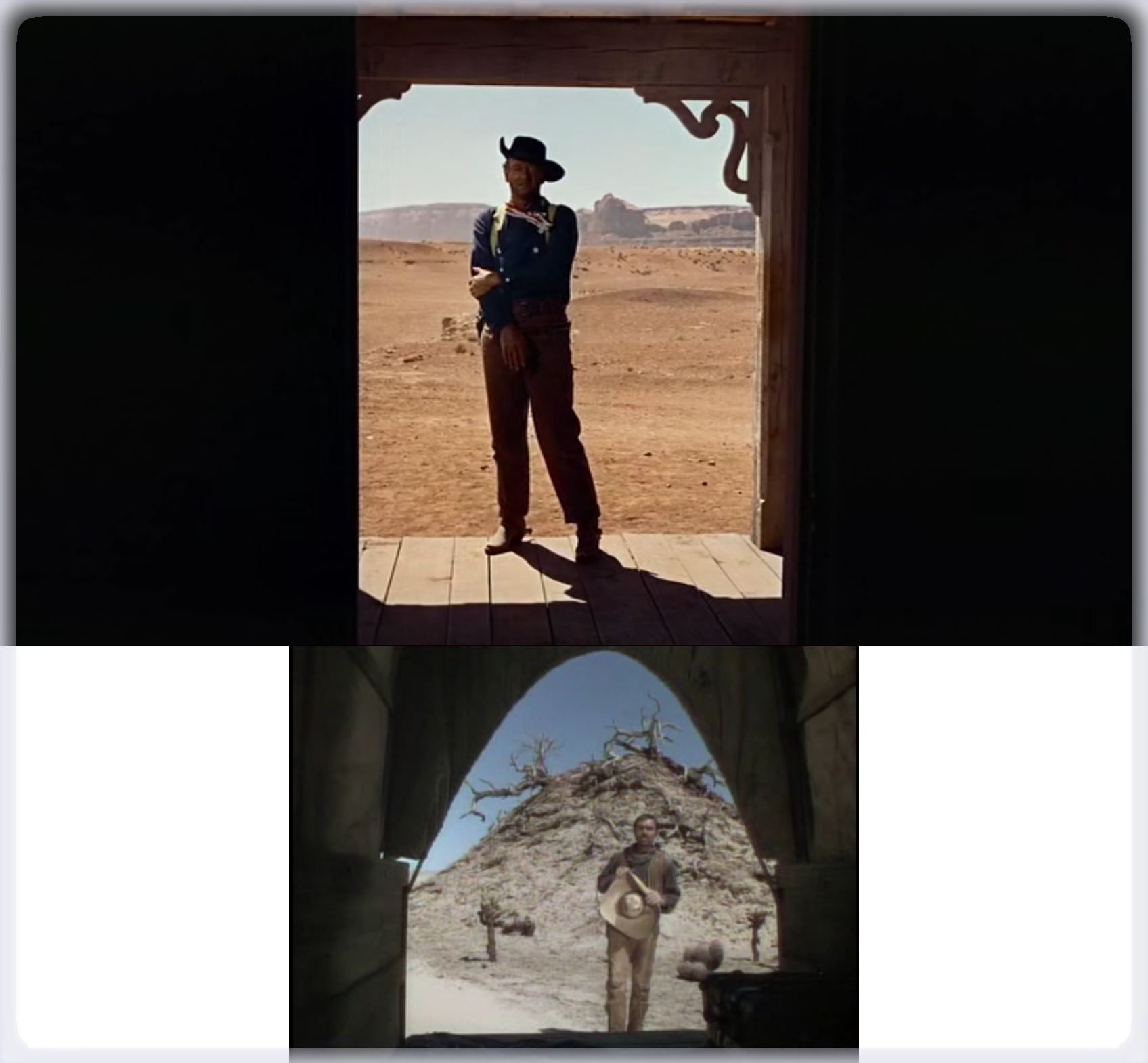A somewhat common pattern in the cinema of John Ford. Outside vs. inside. The blaring sun outside. Inside it’s darker but not dark, not really, it only looks that way. The shots are from John Ford’s “The Searchers” (1956), above, and “3 Godfathers” (1948). In both cases, the lone figure hesitates in his approach and weighs stepping over a threshold, a life-changing step that implies letting go of the past. Pedro Armendariz, below, is in search of redemption, and embracing his humanity, in the other, John Wayne is considering if time has come to rejoin and accept his own family, race mixing included.
Apart from the similarities, the shots serve different purposes. In the “3 Godfathers”, the slightly lit interior of the wagon shows a short-lived shelter from the hard and cruel reality of the desert and the almost certain death that awaits whoever gets trapped in it, when ill-prepared. In “The Searchers” the contrast is starker and the purpose more abstract, beyond showcasing the difference of being outside and inside. The complete darkness inside, indicating both the difficulty in the choice but also hinting at the fact that there’s no more middle ground, you’re in or you’re out, and if you’re in you share both the merry times of convivial life but also the responsibilities that may come with it. As John Wayne considers his next step, there’s much more information outside the frame than in it, but the visual information that it contains shows the figure in it as it readies himself to start a new chapter in his life, in lockstep with a nation in a furious process of transformation and evolution. From the wilderness into the steady, if dull, heart of civilization.

